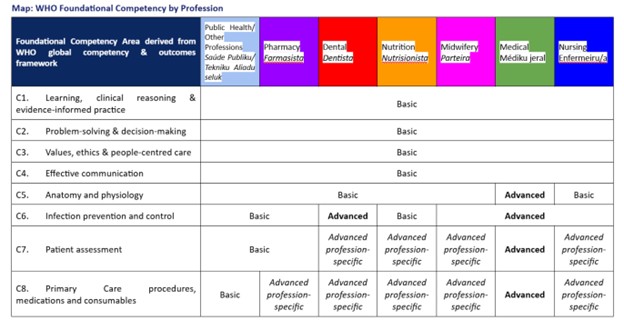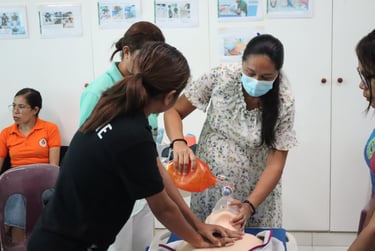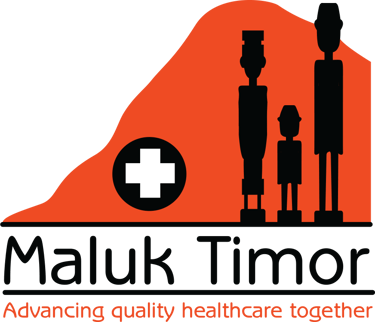Overview of CPD-IPHC
CPD-IPHC (Continuing Professional Development – Integrated Primary Health Care) consists of clinical simulation packages adapted from existing essential service teaching packages. These existing packages are often limited in scope, unevenly weighted in content (biased toward vertical programs), and typically targeted at specific cadres, without adequately addressing the needs of the whole healthcare team.
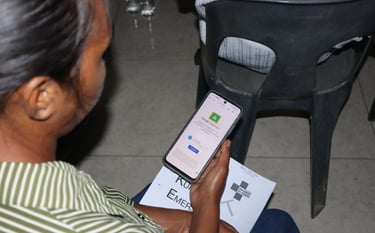

Approach to the Syllabus:
Competency-Based
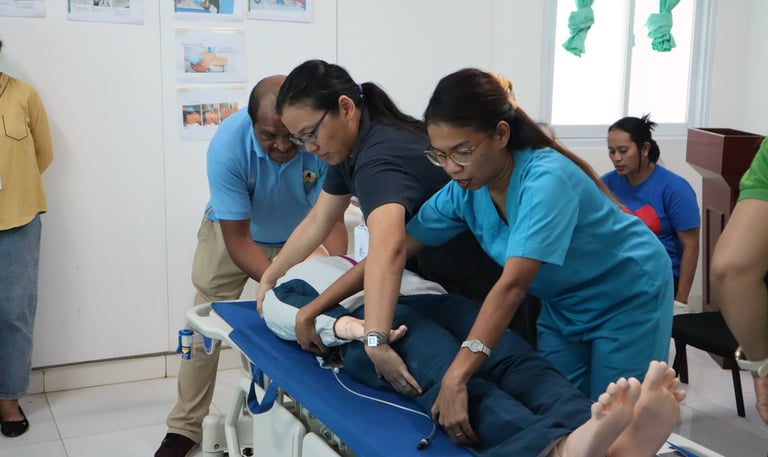

The multi-track curriculum leverages on BOLD learning technologies, which must be implemented in an incremental manner considering INSP-TL and MoH’s readiness for adoption. Digitalising part of the course increases accessibility, and cost-effectiveness particularly in rural health facilities. Examples of use-cases are: Microlearning videos for basic IPHC Curriculum nursing / clinical skills in Tetun (patient assessment, approach to child in respiratory distress); Digital self-administered multiple-choice questionnaires for self-assessment; Flipped classroom
We focus on learners’ achievement of desired foundational competencies (“shows”), not just knowledge (“knows”).
Utilizes The "Authentic Learning" Concept
We maximise translation of learning to action by bringing learning context in close proximity to practise context. E.g. use of Simulation-Based Medical Education (SBME), and as far as possible bringing trainers to health facilities rather than bringing learners to the capital.
"BOLD" (Blended Online Learning Digital)
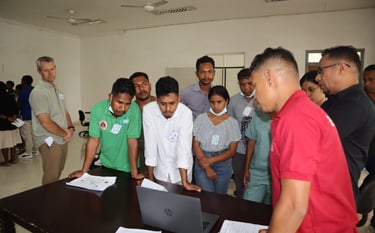

Employee The "Team-Based Learning" Concept or "multidisciplinary team"
This curriculum recognises that practice activities require different configurations of teams to perform together. Hence training will be delivered in a multidisciplinary setting in order to build patterns of cooperative work which can translate to the practice setting.
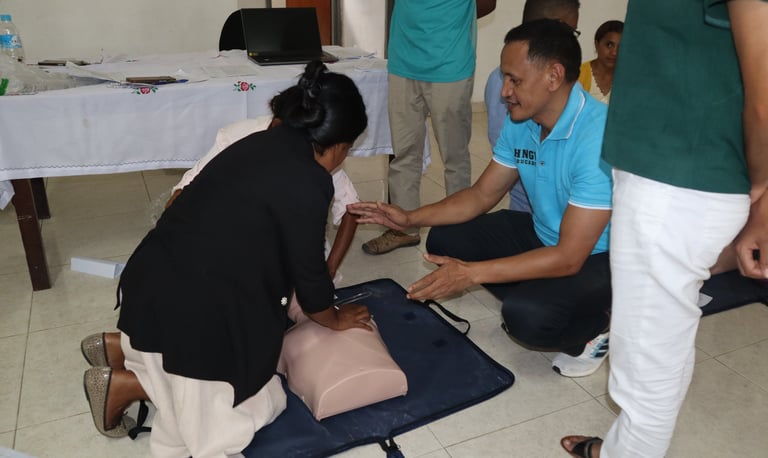

Differentiate Between Cadres of Health Professions
While care is integrated, the syllabus is differentiated to match the range of baseline competencies and types of practice activities that each cadre/profession is expected to achieve.
Aim and Objectives of the Course
For health professionals to achieve sufficient competency to perform the practice activities described in the essential service plan 2022 at primary health care level(including Community health centre, Health posts, SISCa and SNF operations)
Objectives
For health professionals to improve relevant knowledge, skill and attitudes so as to provide care according to the competencies listed in the ESP 2022(particularly 27-46) and other documents.
The eight areas are defined:
Emergency Care
Infectious Disease
Non-communicable disease
Social Issues in Health Care
Maternal and infant Care
Child and adolescent health
Function, Special need and Rehabilitation
Palliative Care
The 8 foundational competencies C1-C8 are cross-cutting, overlapping and often interrelated skills. For example, communicating effectively with patients, families and other professionals is crucial in emergency care, palliative care and health promotion, and also relates to having performed an adequate patient assessment. Infection prevention and control((aseptic technique, sharps safety) is foundational to performing primary care procedures e.g. dental, immunisation or family planning services. Most of these foundational competencies are derived from the WHO framework, but several technical aspects (e.g. patient assessment, anatomy and physiology) are derived from consultation during the stakeholder workshop, domain experts (e.g. experienced health professions educators and facility leaders) and direct observation during the Training Needs Assessment.
